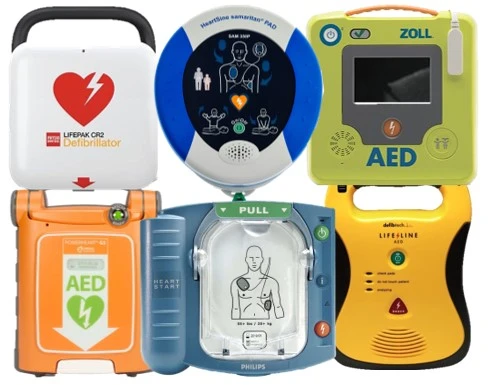What is Sudden Cardiac Arrest?
Sudden cardiac arrest (SCA) occurs when the heart suddenly stops beating or its normal rhythm suddenly becomes disorganized and inefficient. When this occurs, blood and oxygen cannot be circulated throughout the body to nourish vital organs like the lungs, kidneys and brain. SCA may or may not be preceded by warning signs or symptoms. If left untreated, SCA will quickly progress to death.
SCA is different from a heart attack. Although these terms are often used interchangeably, the two conditions are very different. In SCA, there is no functional heartbeat. During a heart attack, the heartbeat continues. A heart attack occurs when there is diminished blood flow to the heart due to a blockage, classically causing chest pain. A heart attack will likely progress to cardiac arrest if not treated quickly by medical professionals.
An easy way to understand what occurs during SCA compared what happens during a heart attack is to consider what causes each condition. SCA is caused by an abnormality in the heart’s “electrical conduction system”, which regulates its normal beating pattern. A heart attack is caused by a “blocked pipe”, which ultimately prevents the heart from receiving oxygen.
About CPR
Cardiopulmonary resuscitation, or CPR, is used to treat victims of SCA. During CPR, a rescuer uses chest compressions to help the heart pump blood throughout the body. Although performing CPR may seem scary, its role in saving victims of SCA is critical. CPR may be performed with or without administering rescue breaths, or “mouth-to-mouth.” In fact, compression-only CPR is widely considered just as effective as providing compressions and breaths together.
About AEDs
Automated external defibrillators, or AEDs, are devices used to treat SCA victims. This occurs through the delivery of a “shock” to the heart. Although SCA quickly causes the heart to stop beating, there is often a short period of time in which the heart is “fibrillating”, or quivering. Hence, de-fibrillation. It is during this critical three-to-four minute period that an AED must be used. Although AEDs come in many different shapes and colors, they all work the same way. If used quickly, an AED more than doubles the victim’s chance of survival.
Public Access Defibrillators are AEDs that are located in public places and available for the public to use in an emergency. Formal training is not required to properly operate an AED. In fact, no training is required at all. AEDs are lightweight and portable, not tethered to an outlet and very easy to use. Once the AED is powered on, automated voice prompts will guide the user through use.
It’s important to understand that AEDs are very safe. A shock is allowed by the AED only when the heart is fibrillating. An AED will not shock someone with a normal heart rhythm.

